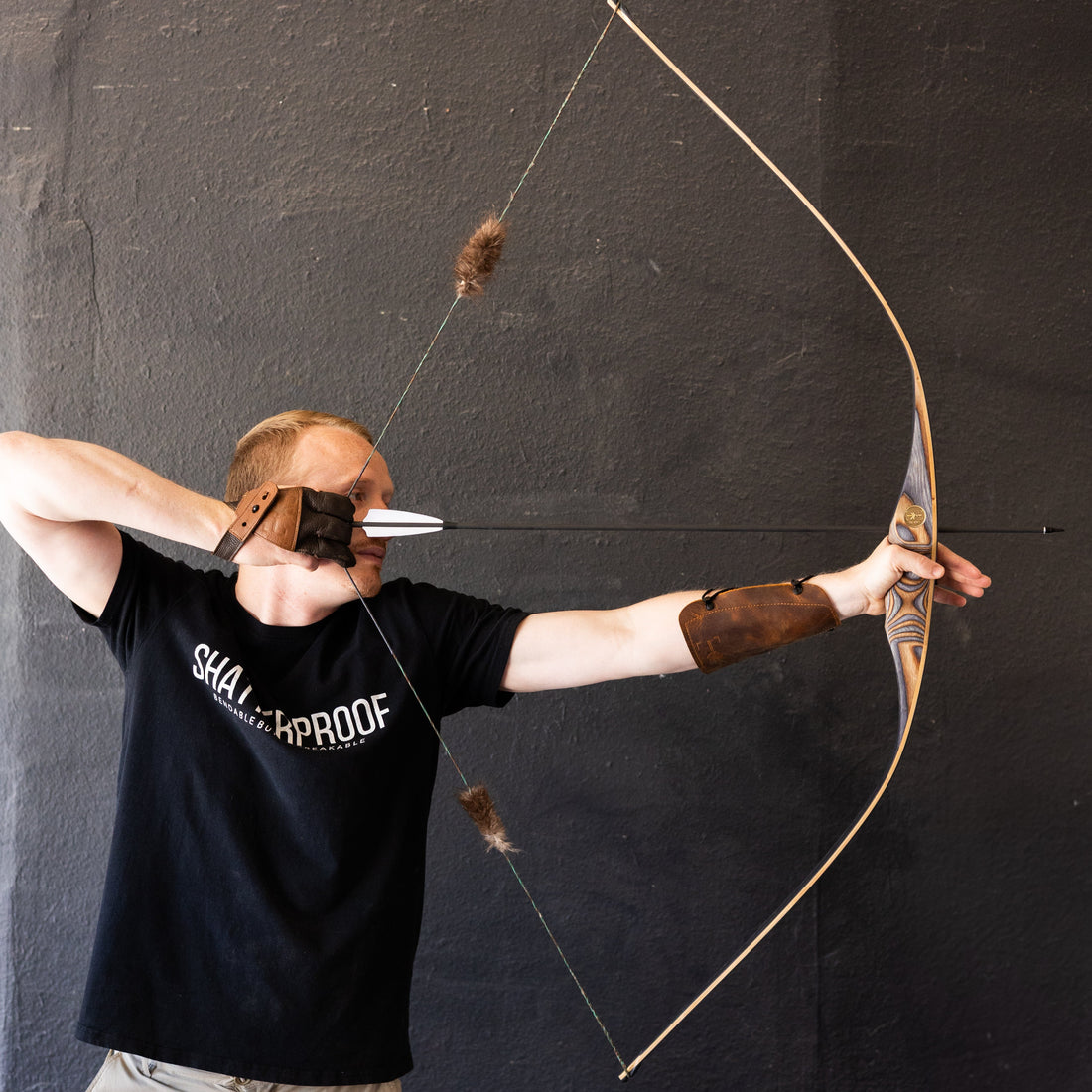Recurve bows have been used for centuries, and their design has evolved over time to improve accuracy and performance. One important factor that affects the performance of a recurve bow is the draw length. Draw length is the distance between the bow and the bowstring when drawn. The standard draw length to measure draw weight is a 28" draw. But not everyone has a 28" draw. So how does changing the draw length impact the draw weight of a recurve bow, longbow and reflex deflex bows? Let's explore.
What is Draw Weight?
Draw weight refers to the amount of force required to pull back the bowstring to a specific draw length. It is typically measured in pounds (lbs). The higher the draw weight, the more force is required to fully draw the bow. Draw weight plays a crucial role in determining the speed and power of an arrow when released.
How Draw Length Affects Draw Weight
When you increase the draw length of a recurve bow, the draw weight also increases. This means that the bow becomes harder to draw back as the draw length is extended. On the other hand, reducing the draw length decreases the draw weight, making it easier to draw the bow.
1" change in draw length with change the draw weight by about 2.5 lbs
Let's consider an example to understand this better. Suppose you have a recurve bow with a draw weight of 30 pounds at a draw length of 28 inches. If you increase the draw length to 30 inches, the draw weight will also increase. In fact, it will increase by about 2-3 lbs per inch, so at 30" the bow would be about 35 lbs and at 26" it would be about 25lbs.
We tested 6 differen bows to get this information. This chart shows the average change in draw weight per inch drawn

Why Does Draw Length Affect Draw Weight?
The relationship between draw length and draw weight is due to the mechanics of the bow. As you increase the draw length, you are effectively increasing the distance over which the bow limbs bend. This increased bending results in more potential energy being stored in the limbs, which translates to a higher draw weight.
It's important to note that the draw weight of a recurve bow is not solely determined by the draw length. Factors such as the bow's design, limb material, and limb stiffness also play a role. However, draw length is a significant factor that directly affects draw weight.
Considerations for Choosing the Right Draw Weight
In conclusion, changing the draw length on a recurve bow has a direct impact on the draw weight. Increasing the draw length increases the draw weight, while decreasing the draw length reduces the draw weight. Understanding this relationship is essential for archers looking to optimize their performance and achieve accurate shots.

